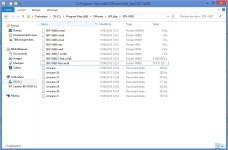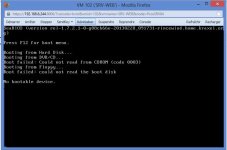Hello !
Thanks in advance for your future help,
Now here's come the "problem"
I'm actually on an company which used to use VMWare ESXi 5.1 and now for some reasons want to use ProxMox VE 3.0.
So what I actually did was to copy and convert some files I needed to restore the VM which I did. (Thanks to http://pve.proxmox.com/wiki/Migration_of_servers_to_Proxmox_VE)
Now that I have my .qcow2 file I don't know how to make it understand " Use this .qcow2 extension to boot ".
Thanks,
Best regards.
Thanks in advance for your future help,
Now here's come the "problem"
I'm actually on an company which used to use VMWare ESXi 5.1 and now for some reasons want to use ProxMox VE 3.0.
So what I actually did was to copy and convert some files I needed to restore the VM which I did. (Thanks to http://pve.proxmox.com/wiki/Migration_of_servers_to_Proxmox_VE)
Now that I have my .qcow2 file I don't know how to make it understand " Use this .qcow2 extension to boot ".
Thanks,
Best regards.



